The rustling of leaves and the chirping of birds mingle seamlessly with the sound of children’s voices and the school bell. Purple flowers bloom in abundance in the vicinity. The Abhayaran Sikshan Samiti Higher Secondary School, popularly known as the PD Khera School, is busy with children going about the business of learning and playing.
The school lies in the Chhaparwa range of Achanakmar Tiger Reserve in Mungeli district of Chhattisgarh, about 185 kilometres from the state capital Raipur. It is the only high school within 20-25 kilometers around — a single storeyed affair with seven rooms and a veranda wrapped around it.
The school has been running since 2008 when a retired college professor from Delhi University, PD Khera set it up to educate the children of Gond and Baiga tribal communities living there.
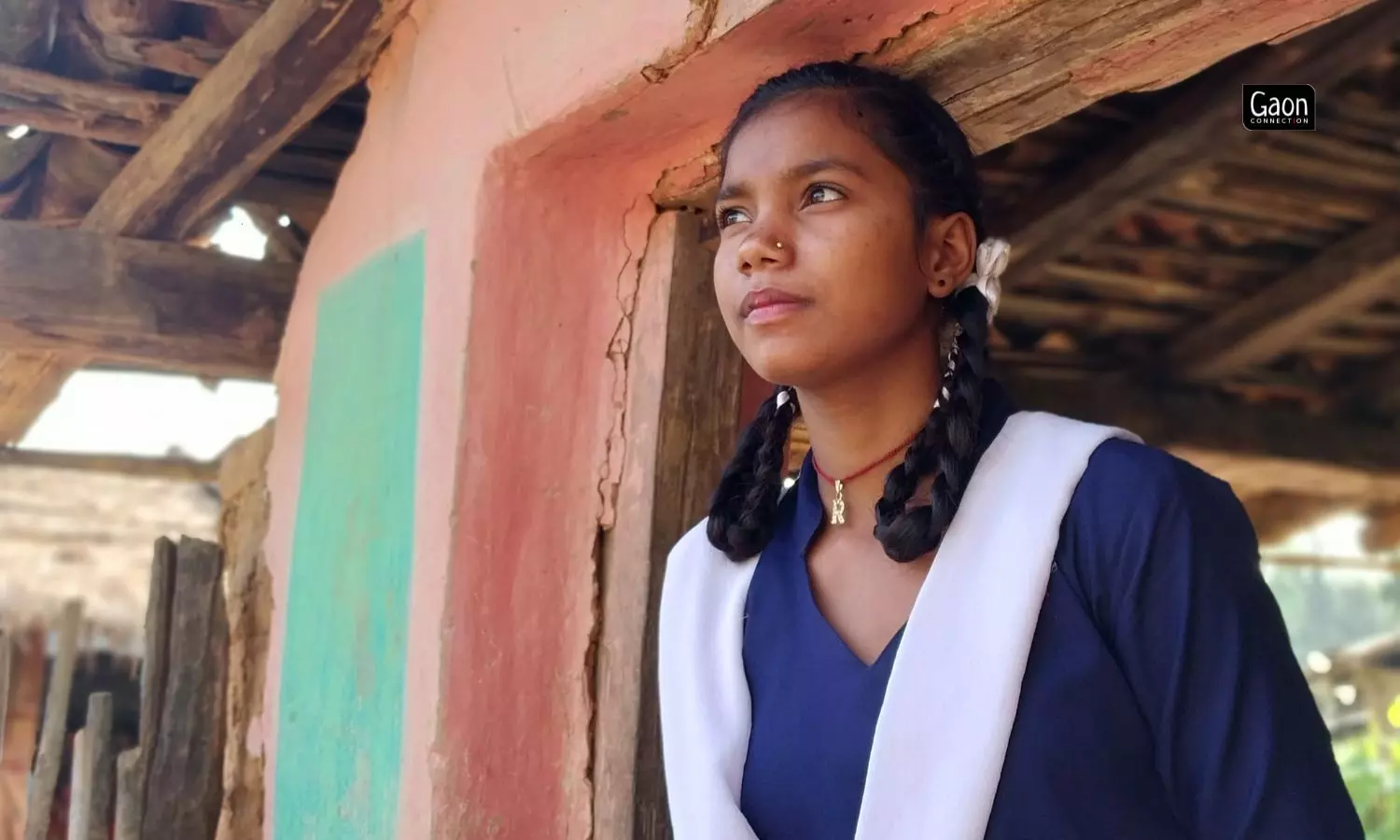
Baiga Adivasi Seema Dhurwey is a resident of Lamni range studying in Class 12. Many students like her catch an early morning bus to arrive at the school, 20-25kms away from their homes. Photo by Deepanwita Gita Niyogi.
But, the higher secondary school, which began with just classes nine and ten, and then classes eleven and twelve were added to it, is struggling to survive. There are five teachers in all, a clerk and a computer operator who work at the school that has about 100 adivasi students.
None of the school staff has received its salaries for the past four years, complained the teachers. The school is awaiting a promised government grant that is yet to come through, they said.
Also Read: Maharashtra: The ‘Jeevan Shalas’ Offer Education to Adivasi Children in Nandurbar
Yogesh Jaiswal, who teaches social science and Sanskrit, is the oldest teacher at the Abhayaran Sikshan Samiti Higher Secondary School having taught there for 14 years. He is a worried man.
“Most of our students are first-generation learners with a few who have parents who have studied till the primary level. I am worried about the school’s future. I have no idea what will happen next,” Jaiswal told Gaon Connection.
Jaiswal, who used to draw a salary of Rs 10,500 per month in 2018, hopes something good happens. “I have a family to take care of. If the school gets the grant, our life will be made,” he told Gaon Connection.
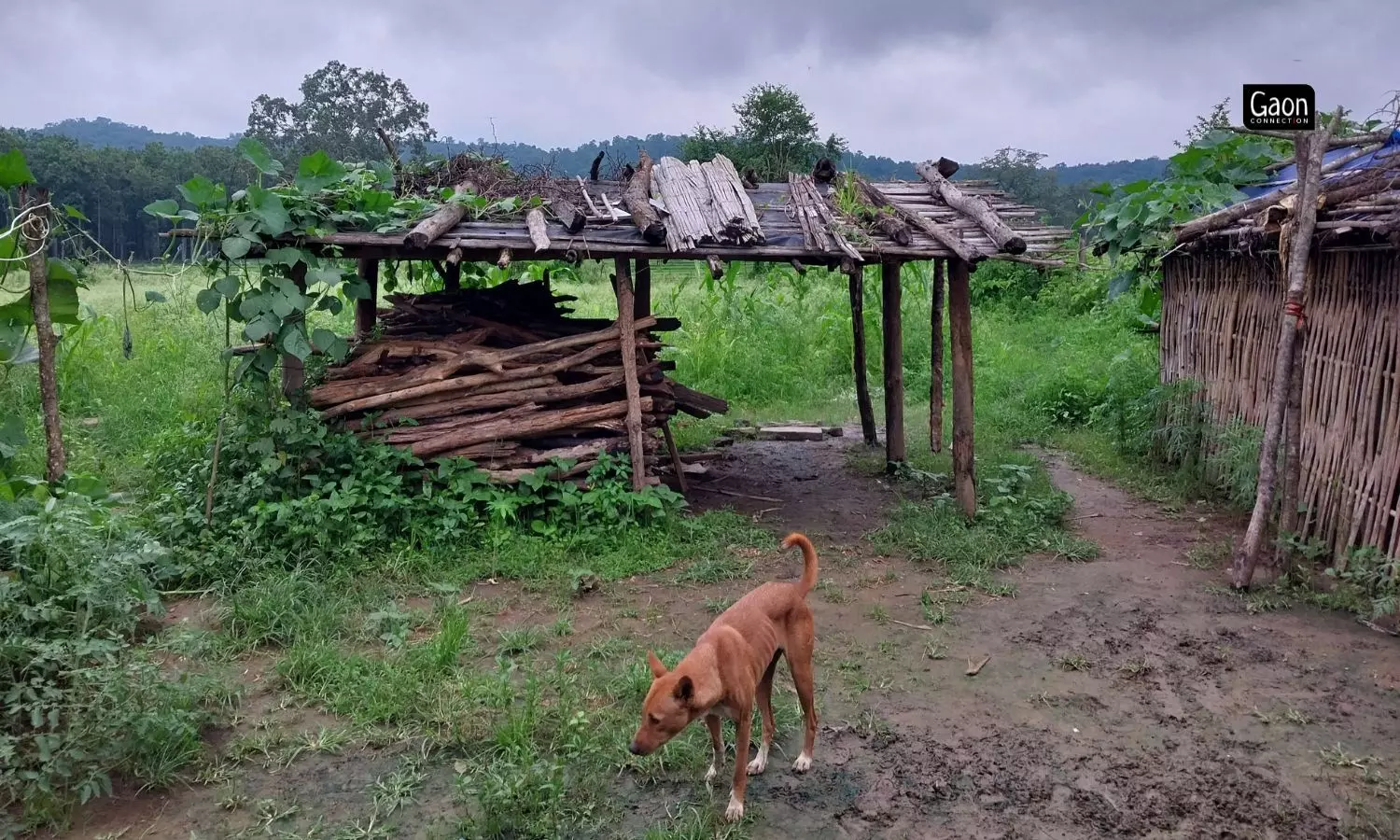
Bindawal village inside the Achanakmar Tiger Reserve lacks power connection and has no mobile network, says former student Churan Singh Shrivas. Photo by Deepanwita Gita Niyogi.
Jaiswal has not been paid for 45 months, he said. His family comprises his wife, two children and his father. “I am spending money from my savings. I come thrice a week, like the other teachers,” he said.
Also Read: Aavishkaar is helping teachers and educators fall in love with maths and science
Jaiswal’s colleague and mathematics, economics and physics teacher Sonu Singh Markam also hoped the grant would come through for them. “I travel 20 kilometres each way every day to and from school. If I get late while returning, there is always the danger of encountering leopards and bears. When we are making so much effort to keep the school afloat, the government grant should come through,” Markam said.
In 2018, when Raman Singh was the chief minister of Chhattisgarh, there was an announcement that the Abhayaran Sikshan Samiti Higher Secondary School would become a government school. But, as the teachers did not have the necessary B.Ed qualification, a government grant was promised to it.
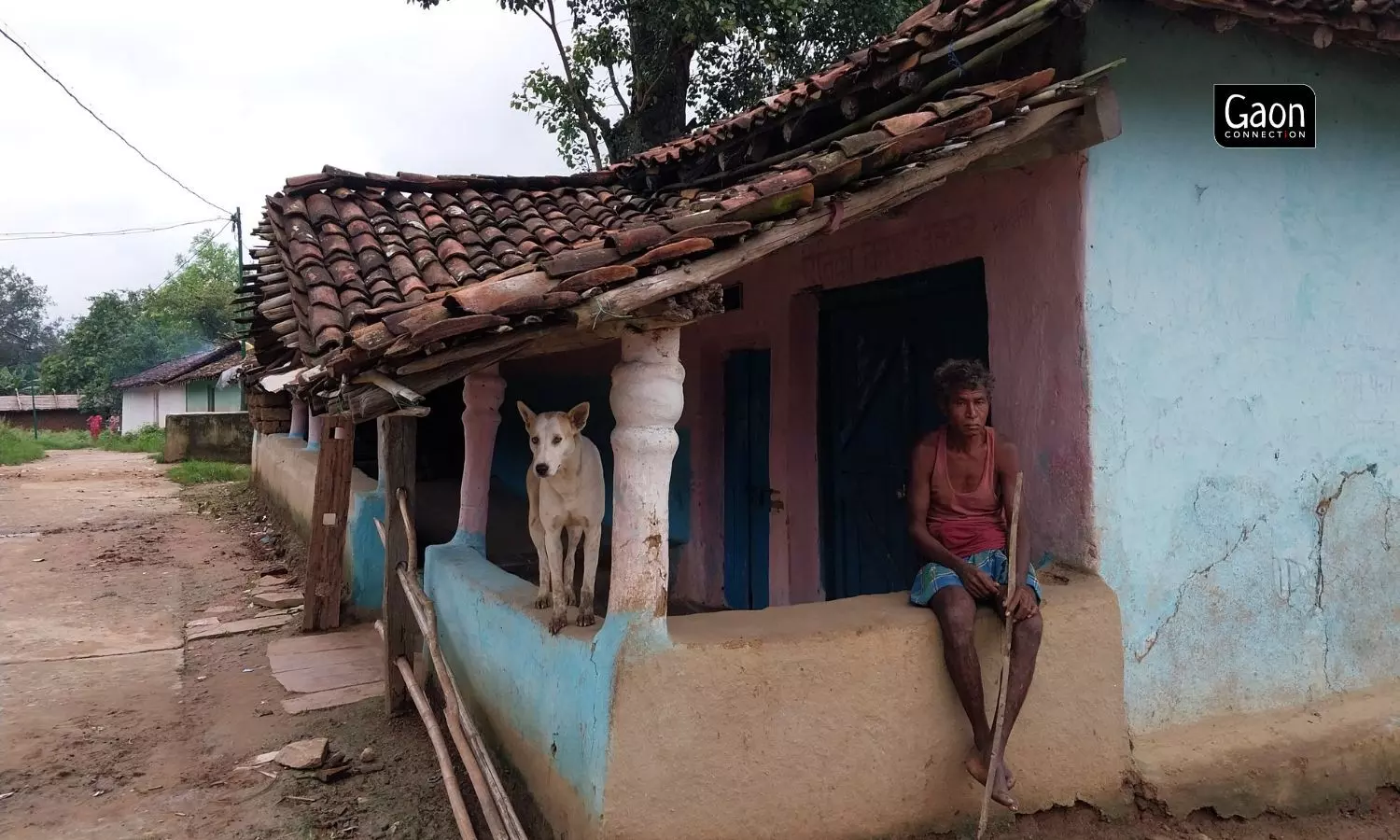
PD Khera is the only high school in the area, where students from almost 12 neighbouring villages come walking despite overflowing streams in the monsoon and non-existant roads. Photo by Deepanwita Gita Niyogi.
“An amount of Rs 35 lakh was set aside in 2020-21 for paying teachers’ salary, but the money has not seen the light of day, entangled as it is in red tape,” Prasanna Singh Netam, the clerk at the school who has been working there for five years, told Gaon Connection.
Also Read: Conversations with a cab driver led to setting up of a school in Turtuk village, Ladakh
A school for the adivasi children
Way back in 1982, PD Khera, a professor of sociology in Delhi University, visited Achanakmar-Amarkantak Biosphere Reserve that falls in both Chhattisgarh and Madhya Pradesh, and fell in love with it so much that he settled down in a place called Lamni inside the reserve after his retirement, and started the school for the Gond and Baiga children.
“If Khera sir hadn’t come to Achanakmar, people like me wouldn’t have got any opportunity to study beyond class 8. As it is a reserved forest area, many teachers don’t want to come here,” Kumar Sanu Siyam, a former student and now a science teacher at the school since 2016, told Gaon Connection.
The 32-year-old teacher daily travels by bus paying a fare of Rs 20 each way. He lives in Bindawal which is about four kilometres away, he said.
But, the dream project of Khera to educate the adivasi children has fallen on hard times, and the teachers have not been paid for four years. The educational prospects of the adivasi children are shaky. “As there is no other school nearby, if this shuts down, students won’t be able to study further,” Siyam feared.
Edrees Khan teaches history for classes 11 and 12 and social science, and Hindi for classes 9 and 10. “I cannot in good conscience stop teaching just because I am not being paid,” said 43-year-old Khan who lives in the adjoining Gaurela-Pendra-Marwahi district and travels 60 km each day by bus.
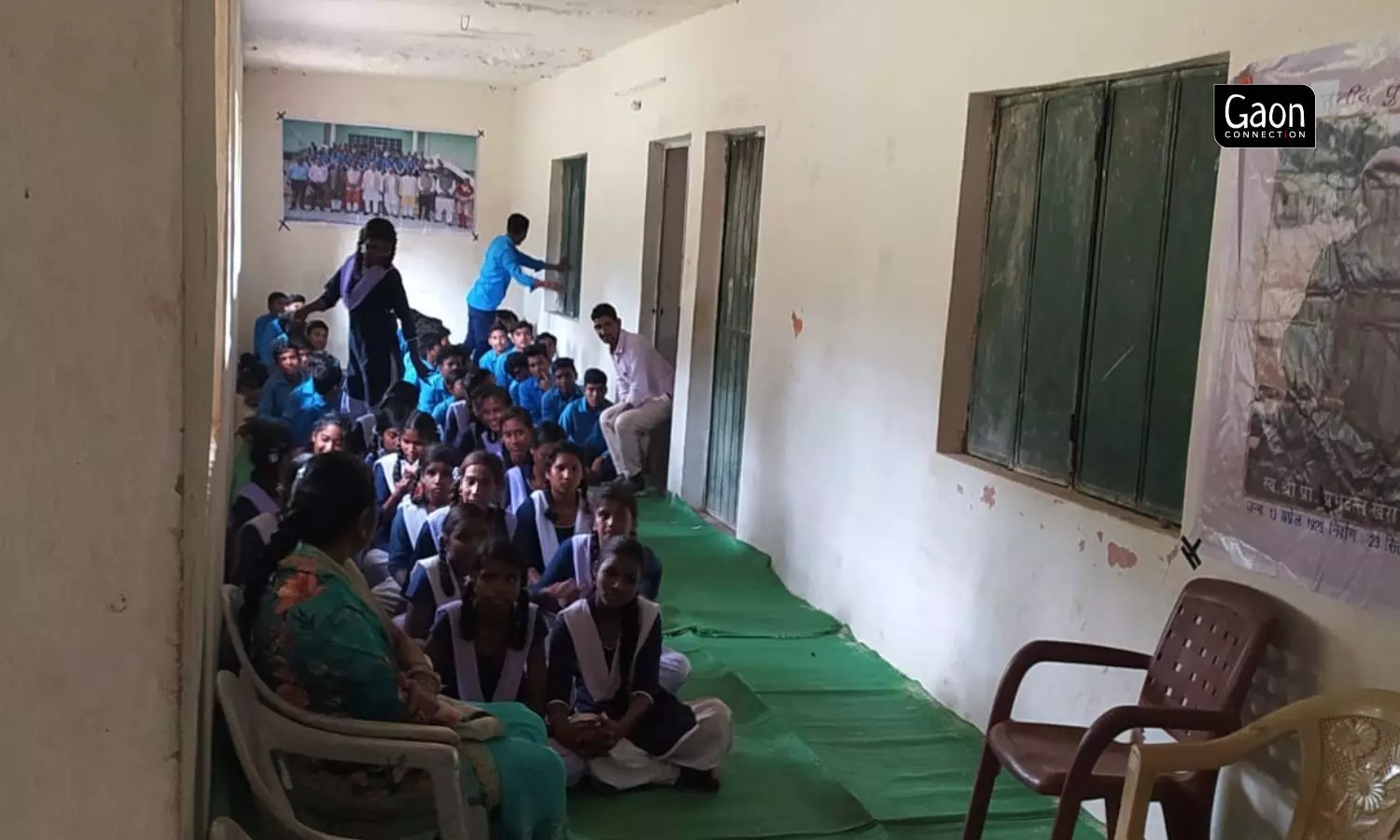
Most of the students of PD Khera school are first-generation learners with a few who have parents who have studied till the primary level. Photo by Prasanna Netam.
“I catch the bus to school at 6.10 am to reach by 9.10 am,” he told Gaon Connection. He spends Rs 200 a day, out of pocket to come to school, he said. “But how can I stop being a teacher when the future of the adivasi children are at stake,” he asked. Fortunately for him, he said he could do this, because he lived in a joint family of 15 people and his brothers who run a business, support him.
Also Read: A former IAS officer creates level playing fields for underprivileged civil service aspirants
Khan earlier taught at the DAV Mukhymantri Public School in Pendra district, where he earned Rs 34,500 a month as salary. He joined the PD Khera school when its founder requested him to do so. “I thought at that time it would become a government school soon,” Khan said.
Khan hoped that with the promised grant, no teacher would have to leave and every one would get a chance to complete their B.Ed. Teachers and students alike are hoping the school extricates itself out of its difficulties.
The Promised Sum
According to the teachers in the school, when Khera was alive (he passed away in 2019) many donors came forward to support the school. It also received funds from CAMPA (Compensatory Afforestation Fund Management and Planning Authority) a few times, but that stopped too.
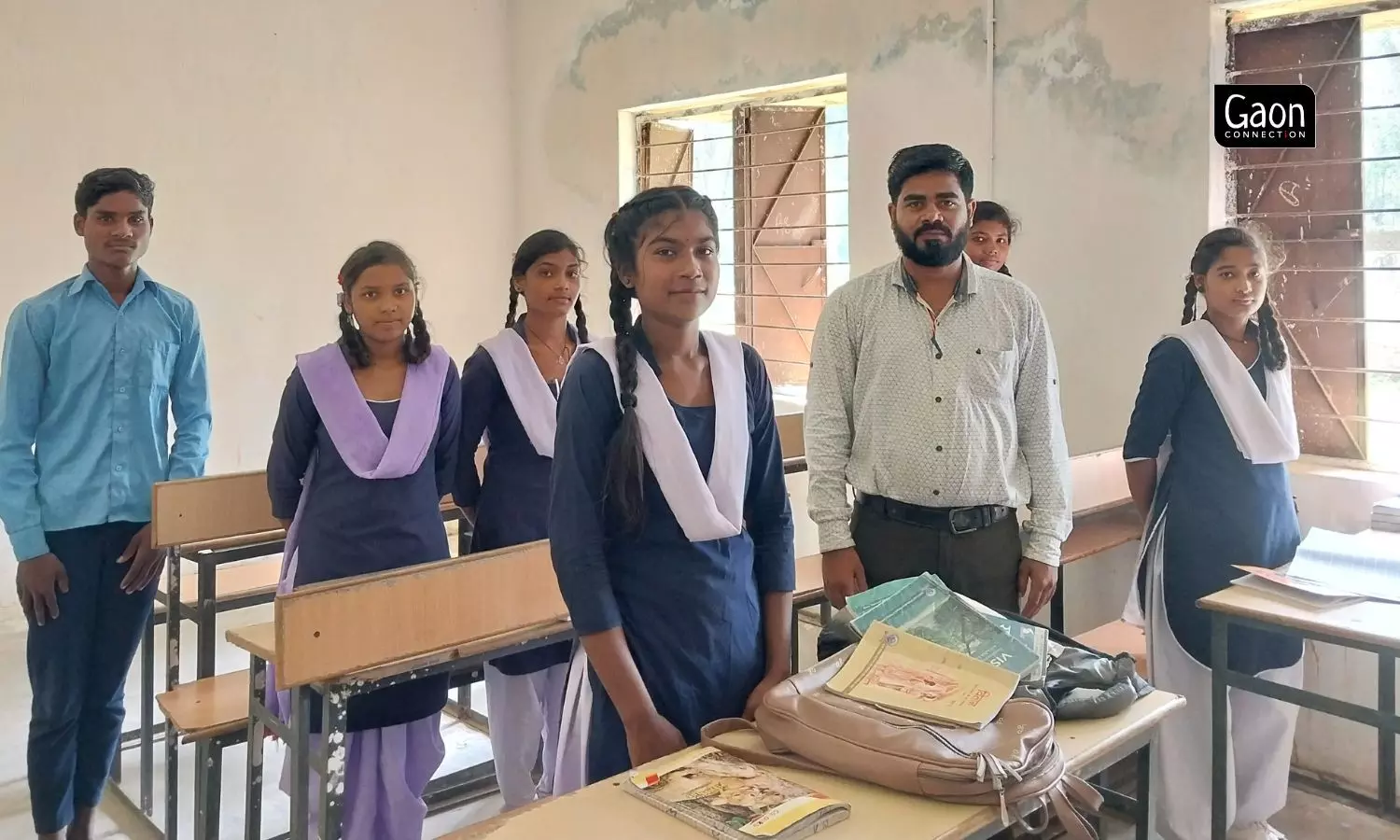
The staff of PD Khera school has not received its salaries for the past four years, and is awaiting a promised government grant. Photo by Deepanwita Gita Niyogi.
Jaiswal said the school charged students approximately Rs 750-Rs 850 annually as fees, at par with what government schools charged. “Books and notebooks are free for students of Classes 9 and 10. Those in high school have to buy books but sometimes they get it for free and they in turn pass the books on to their juniors,” Jaiswal said.
Also Read: Rural libraries in Kishanganj, Bihar spread education among poor children
Students are taught science, social science, mathematics, Hindi, Sanskrit and English in classes 9 and 10. Physics, chemistry and biology are taught to science group students in higher secondary and the arts students study history, political science and economics. English and Hindi are common for both.
“As it is the only high school in the area, students from 12-13 villages depend on it for higher education. They come walking despite overflowing streams in the monsoon and non-existant roads,” former student Churan Singh Shrivas, a resident of Bindawal village, told Gaon Connection.
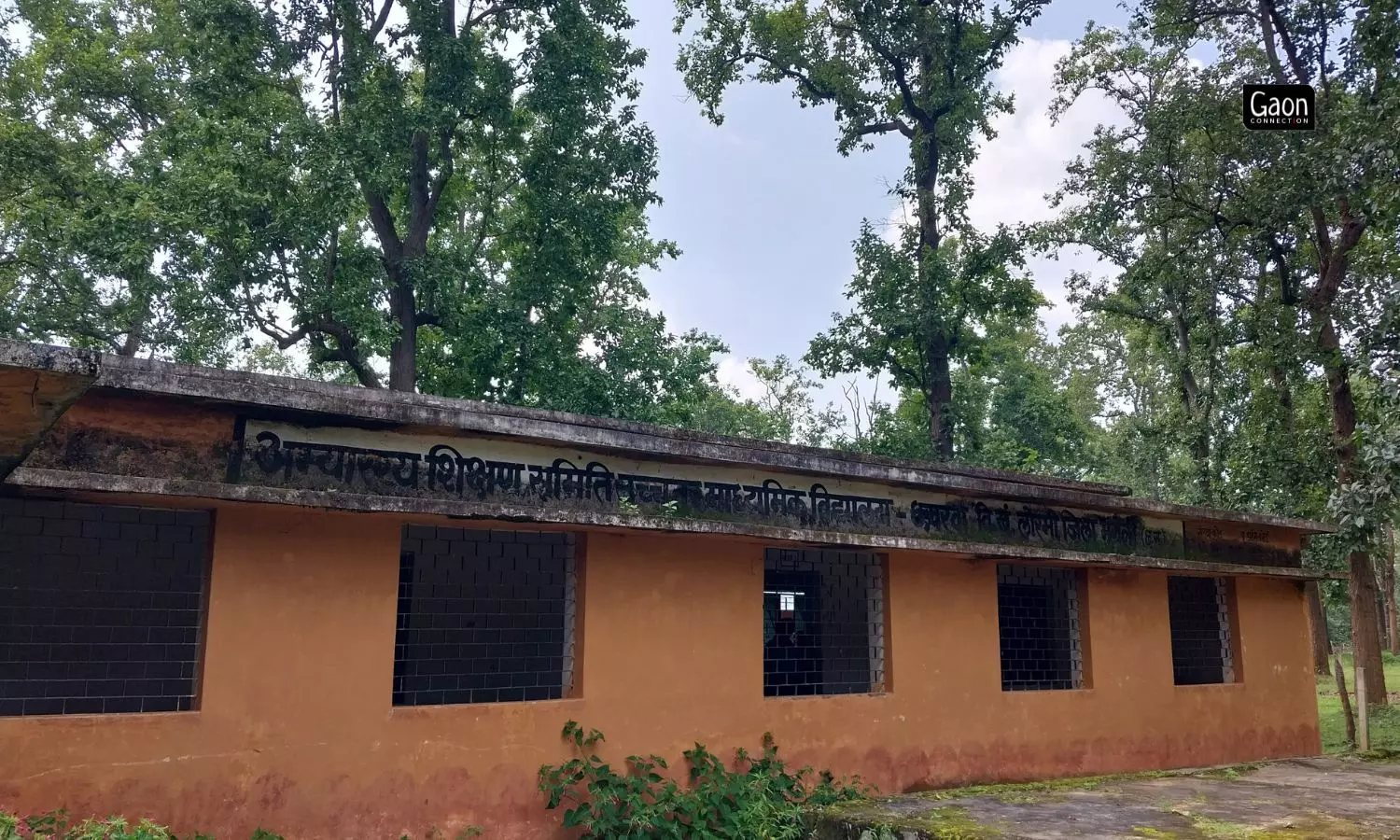
The Abhayaran Sikshan Samiti Higher Secondary School, popularly known as the PD Khera school, lies in the Chhaparwa range of Achanakmar Tiger Reserve. Photo by Deepanwita Gita Niyogi
Shrivas himself would walk on most days for half an hour or so to get to school as there were no buses available where he lived. The teenager works as a barber though he wanted to go to college. “My family cannot afford the money to send me to college,” he said.
Also Read: The Evergreen ‘Bana Sir’ of Kendrapara
Rahul Deo, the collector of Mungeli district said he was aware of the problem. “I will take up the matter of the school with the government,” he told Gaon Connection, over the phone. “Staff members from the school recently came and met me on Friday [February 24]. I have assigned the deputy collector to look into the matter and follow it up,” he said.
The deputy collector of Mungeli, Naveen Bhagat, told Gaon Connection, “Rs 35,68,000 was released in 2020-21 of which Rs 26,52, 000 was earmarked for paying teachers’ salaries. I am trying to find out where that money is.”
Meanwhile, S Jagadeesan, the field director of Achanakmar Tiger Reserve, is considering extending some financial help from the Tiger Conservation Foundation.
“There is a school samiti that was formed in 2013, to ensure the smooth functioning of the school,” Deepak Soni, an English teacher, who also functions as the secretary of the school samiti, told Gaon Connection. The samiti is made up of 13 members from the nearby villages. “The school can somehow manage to run for the next three months,” Soni said.


















